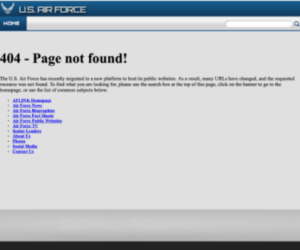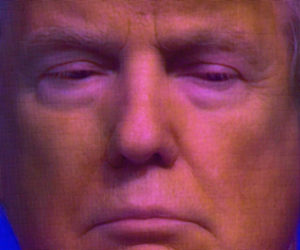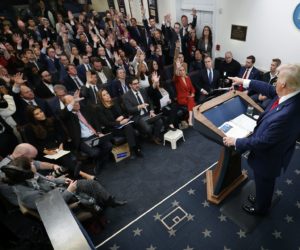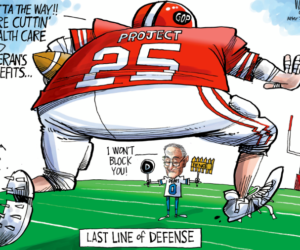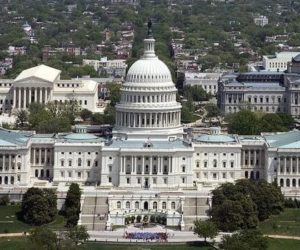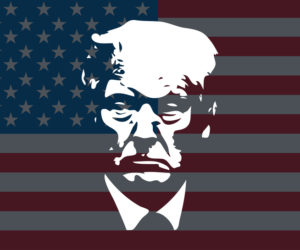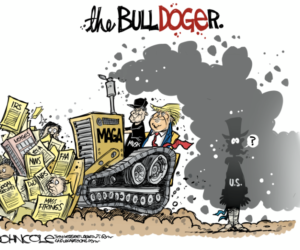 This isn’t the first time this has been reported in the world media — but a New York Times piece is now giving wider circulation to a British memo that paints a picture of President George Bush as being intent to invade Iraq, no matter what — even to the point of suggesting that an incident was needed to provoke a U.S. invasion:
This isn’t the first time this has been reported in the world media — but a New York Times piece is now giving wider circulation to a British memo that paints a picture of President George Bush as being intent to invade Iraq, no matter what — even to the point of suggesting that an incident was needed to provoke a U.S. invasion:
In the weeks before the United States-led invasion of Iraq, as the United States and Britain pressed for a second United Nations resolution condemning Iraq, President Bush’s public ultimatum to Saddam Hussein was blunt: Disarm or face war.
But behind closed doors, the president was certain that war was inevitable. During a private two-hour meeting in the Oval Office on Jan. 31, 2003, he made clear to Prime Minister Tony Blair of Britain that he was determined to invade Iraq without the second resolution, or even if international arms inspectors failed to find unconventional weapons, said a confidential memo about the meeting written by Mr. Blair’s top foreign policy adviser and reviewed by The New York Times.
“Our diplomatic strategy had to be arranged around the military planning,” David Manning, Mr. Blair’s chief foreign policy adviser at the time, wrote in the memo that summarized the discussion between Mr. Bush, Mr. Blair and six of their top aides.
“The start date for the military campaign was now penciled in for 10 March,” Mr. Manning wrote, paraphrasing the president. “This was when the bombing would begin.”
Were these contingency plans? The British memo, if proven correct over time and possibly with further accounts in coming months, suggests that the UN and diplomat efforts were actually kind of cover stories to claim that all other means were honestly exhausted. According to the Times account, Bush’s mind was made up:
The timetable came at an important diplomatic moment. Five days after the Bush-Blair meeting, Secretary of State Colin L. Powell was scheduled to appear before the United Nations to present the American evidence that Iraq posed a threat to world security by hiding unconventional weapons.
Although the United States and Britain aggressively sought a second United Nations resolution against Iraq — which they failed to obtain — the president said repeatedly that he did not believe he needed it for an invasion.
The Times notes that some of this info was published or broadcast earlier elsewhere. But what it brings home is that Blair and Bush were supremely confident in not just the war, but how easy the post-war period would seemingly be. In other words, there was a massive miscalculation on their part:
The memo indicates the two leaders envisioned a quick victory and a transition to a new Iraqi government that would be complicated, but manageable. Mr. Bush predicted that it was “unlikely there would be internecine warfare between the different religious and ethnic groups.” Mr. Blair agreed with that assessment.
But the most damning part is this:
The memo also shows that the president and the prime minister acknowledged that no unconventional weapons had been found inside Iraq. Faced with the possibility of not finding any before the planned invasion, Mr. Bush talked about several ways to provoke a confrontation, including a proposal to paint a United States surveillance plane in the colors of the United Nations in hopes of drawing fire, or assassinating Mr. Hussein.
Those proposals were first reported last month in the British press, but the memo does not make clear whether they reflected Mr. Bush’s extemporaneous suggestions, or were elements of the government’s plan.
So what should you make of it?
It underscores once again this administration’s credibility problem. From one standpoint, the memo shows that Bush was determined to invade Iraq, knew there were no weapons there at a time when he was telling Americans that there were weapons there, and was seemingly ready to stage his own little Gulf of Tonkin incident to provide a pretext for an invasion. Also, it isn’t said here whether Bush was suggesting sending a surveillance plane that had pilots or not. If he was suggesting a piloted plane the becomes far graver.
From another standpoint, it’s a fact that governments do have contingency planning. But was this contingency planning? It looks like far more that that. Contingency planning means you have plans A, B, C ready to go, watch a situation, judge it, then pick one.
This looks as if the decision was made way ahead of time that Sadaam was a bad guy and a future threat but what was needed was a cover story to take him out. If this memo is accurate, the UN meetings, statements about weapons of mass destruction were all CYA efforts to make sure the action could be justified in terms of international law, international politics and domestic politics. They couldn’t just announce: “We believe for X reasons Sadaam is a danger” and go after him. They needed more.
That does not negate the separate questions about whether Sadaam was
an evil leader and posed a long-term threat to the United States if he allied with terrorists in the future. Those are still valid questions.
But like so much in the Bush administration this memo shows a near fatal credibility flaw in this administration. Even more than the Clinton administration, on so many issues the Bush administration is proving to be the “It all depends what is is” administration. This is why even on a vital issue such as immigration reform Bush will have problems because even many within the Republican party now realize that what is said may later proven to be be at variance with the actual facts.
Joe Gandelman is a former fulltime journalist who freelanced in India, Spain, Bangladesh and Cypress writing for publications such as the Christian Science Monitor and Newsweek. He also did radio reports from Madrid for NPR’s All Things Considered. He has worked on two U.S. newspapers and quit the news biz in 1990 to go into entertainment. He also has written for The Week and several online publications, did a column for Cagle Cartoons Syndicate and has appeared on CNN.

